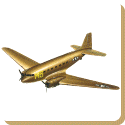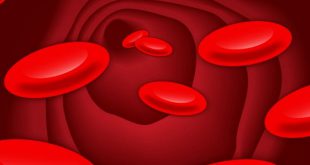 Douglas DC-3 — The Douglas DC-3 is an American fixed wing propeller driven airliner, the speed and range of which, revolutionized air transport in the 1930s and 1940s. Its lasting impact on the airline industry and World War II makes it one of the most significant transport aircraft ever made. The major military version was designated the C-47 Skytrain. Many DC-3/C-47s are still used in all parts of the world.
Douglas DC-3 — The Douglas DC-3 is an American fixed wing propeller driven airliner, the speed and range of which, revolutionized air transport in the 1930s and 1940s. Its lasting impact on the airline industry and World War II makes it one of the most significant transport aircraft ever made. The major military version was designated the C-47 Skytrain. Many DC-3/C-47s are still used in all parts of the world.
Design & Development
The DC-3 was the culmination of a development effort that originated out of an inquiry from Transcontinental and Western Airlines (TWA) to Donald Douglas. TWA’s rival in transcontinental air service, United Airlines, was inaugurating service with the Boeing 247 and Boeing refused to sell any 247s to other airlines until United’s order for 60 aircraft had been filled. TWA asked Douglas to design and build an aircraft that would enable TWA to compete with United. Douglas’ resulting design, the 1933 DC-1, was promising, and led to the DC-2 in 1934. While the DC-2 was a success, there was still room for improvement.
The DC-3 was the result of a marathon telephone call from American Airlines CEO C. R. Smith to Donald Douglas, during which Smith persuaded a reluctant Douglas to design a sleeper aircraft based on the DC-2 to replace American’s Curtiss Condor II biplanes. Douglas agreed to go ahead with development only after Smith informed him of American’s intention to purchase twenty aircraft. The new aircraft was engineered by a team led by chief engineer Arthur E. Raymond over the next two years, and the prototype DST (for Douglas Sleeper Transport) first flew on December 17, 1935 (the 32nd anniversary of the Wright Brothers’ flight at Kitty Hawk, North Carolina). A version with 21 passenger seats instead of the sleeping berths of the DST was also designed and given the designation DC-3. There was no prototype DC-3, the first DC-3 built followed seven DSTs off the production line and was delivered to American.
The amenities of the DC-3 and DST popularized air travel in the United States. With only three refueling stops, eastbound transcontinental flights crossing the U.S. in approximately 15 hours became possible. Westbound trips took 17-1/2 hours due to prevailing headwinds — still a significant improvement over the competing Boeing 247. During an earlier era, such a trip would entail short hops in slower and shorter-range aircraft during the day, coupled with train travel overnight.
A variety of radial engines were available for the DC-3 throughout the course of its development. Early-production civilian aircraft used Wright R-1820 Cyclone 9s, but later aircraft (and most military versions) used the Pratt & Whitney R-1830 Twin Wasp which offered better high-altitude and single engine performance, such as the three DC-3S Super DC-3s with Pratt & Whitney R-2000 Twin Wasps built in the late 1940s.
History
American Airlines inaugurated passenger service on June 26, 1936, with simultaneous flights from Newark, N.J. and Chicago, IL. Early U.S. airlines like American, United, TWA and Eastern ordered over 400 DC-3s. These fleets paved the way for the modern American air travel industry, quickly replacing trains as the favored means of long-distance travel across the United States.
KLM Royal Dutch Airlines received its first DC-3 in 1936, it replaced earlier aircraft types on the service from Amsterdam via Batavia (now Jakarta) to Sydney, by far the longest scheduled route in the world at the time.
Piedmont Airlines operated DC-3/C-47s from 1948 to 1963. A DC-3 painted in the representative markings of Piedmont, operated by the Carolinas Aviation Museum, was retired from flight in 2011. Both Delta Air Lines and Continental Airlines operate “commemorative” DC-3s wearing period markings.
During World War II, many civilian DC-3s were drafted for the war effort and just over 10,000 US military versions of the DC-3 were built, under the designations C-47, C-53, R4D, and Dakota. Peak production was reached in 1944, with 4,853 being delivered. The armed forces of many countries used the DC-3 and its military variants for the transport of troops, cargo, and wounded.
Licensed copies of the DC-3 were built in Japan as Showa L2D (487 aircraft) and in the USSR as the Lisunov Li-2 (4,937 aircraft)
Thousands of surplus C-47s, previously operated by several air forces, were converted for civilian use after the war and became the standard equipment of almost all the world’s airlines, remaining in front line service for many years. The ready availability of cheap, easily maintained ex-military C-47s, both large and fast by the standards of the day, jump-started the worldwide post-war air transport industry. While aviation in pre-war Continental Europe had used the metric system, the overwhelming dominance of C-47s and other US war-surplus types cemented the use of nautical miles, knots and feet in post-war aviation throughout the world.
Douglas had developed an improved version, the Super DC-3, with more engine power, greater cargo capacity, and a different wing but, with all the bargain-priced surplus aircraft available, this did not sell well in the civil aviation market. Only five were delivered, three of them to Capital Airlines. The U.S. Navy had 100 of their early R4Ds converted to Super DC-3 standard during the early 1950s as the R4D-8, later C-117D. The last U.S. Navy C-117 was retired July 12, 1976. The last U.S. Marine Corps C-117, serial 50835, was retired from active service during June 1982. Several remained in service with small airlines in North and South America in 2006.
A number of aircraft companies attempted to design a “DC-3 replacement” over the next three decades (including the very successful Fokker F27 Friendship), but no single type could match the versatility, rugged reliability, and economy of the DC-3. It remained a significant part of air transport systems well into the 1970s.
 Kids Portal For Parents India Kids Network
Kids Portal For Parents India Kids Network
